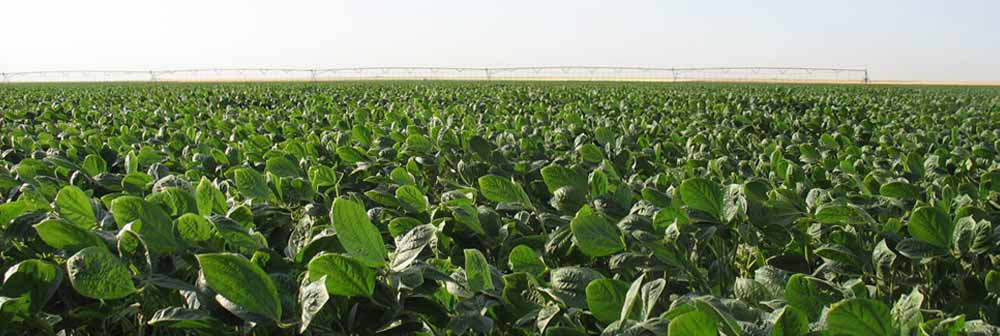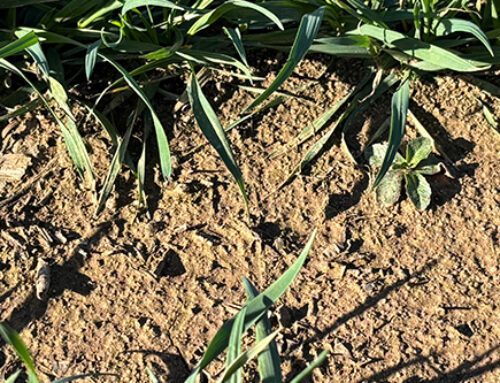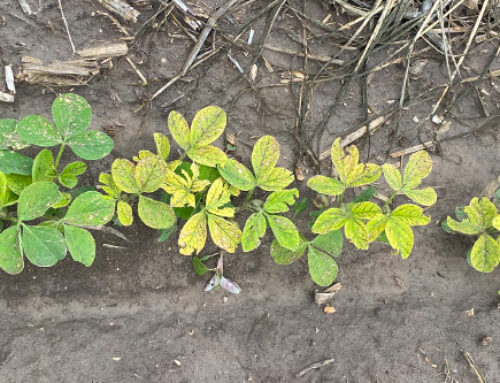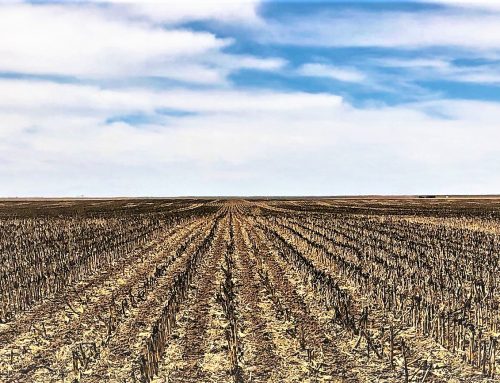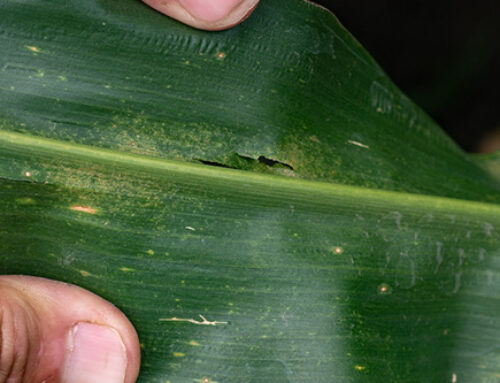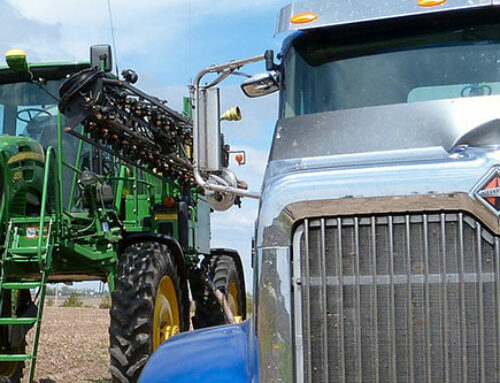Soybeans are a great option for producers to utilize in rotation. Soybeans are not only good for the soil, they are also a good option to clean up fields for other crops in a rotation situation.
To avoid weed pressure concerns, producers in Northeast Kansas tend to practice preventive treatments in the fall and early spring. “A lot of ground is worked in the fall in the Kansas River Valley, while producers in the hill area tend to no-till and spray in the fall,” says Chris McInteer, Crop Quest Silver Lake Division Manager in Northeast Kansas. Producers will follow up with a pre-emerge herbicide mix. “Tall Waterhemp, Palmer Amaranth (pigweed species), and Marestail tend to be some of the most difficult weeds to control in our area,” he adds. But, the soybean/corn rotation allows for mixing up chemical modes of action, which aid in overall weed control.
Insect pressure is also a concern. “Producers in our area can be affected early-on by Bean Leaf Beetles that can do a lot of aggressive leaf feeding in certain years,” states McInteer. He says thrips can be a problem on occasion. But it is mid to late in the growing season when insect pressure can really become an issue. “We have to watch for pod feeders such as stink bugs and corn earworm. Webworms have also been an issue as they devour the leaves of the plant. In the Topeka area and in Missouri, we also watch for Japanese Beetles. We also keep an eye out for soybean aphids,” McInteer explains. “Individually, one insect species is not usually a concern for producers, but the cumulative effect of the various species can make an impact,” he adds. Therefore, adding an insecticide to a post-emerge herbicide application is advised to control insect problems.
“We usually do not have much early insect pressure in our area,” states Brad Benson, Crop Quest Agronomist in the Mount Hope, KS Division. He adds that they have seen pillbugs in soybeans planted into strip till and no till environments. Therefore, it is vital for producers to keep the strip as clean as possible by removing as much trash from the planting strip as possible. Use of row cleaners to move the trash from the planting area has been an effective method. “Utilizing an insecticide treatment on the seed has really aided farmers in keeping early insect pressure on soybeans to a minimum,” adds Benson.
Benson says there are three main weed species that are vital to control and prevent from emerging in soybean fields. In South Central Kansas, the weeds to watch are:
- Marestail
- Dandelion
- Kochia
“A herbicide application in the fall after the soil has cooled off enough, that targets the correct weed species, usually keeps the field quite clean through April,” explains Benson. “Each field must be monitored for emerging weeds and another application of residual herbicide after the fall applied has worn off generally will keep weeds out until well after the crop has emerged,” he adds.
“Timeliness of herbicide application is key to pushing maximum yields in soybeans,” emphasizes Tom Stebly, Crop Quest Division Manager, Enid, OK. Stebly says most of the producers in his area will typically do a pre-plant burn down ahead of planting. As soon as the seed is planted, pre-emergence herbicides are applied followed by a post-emerge application to keep fields clean. “Use of pre-emerge residual herbicides have reduced weed pressure and really helped control glyphosate resistant weeds,” states Stebly.
“In our area, there can be issues with thrips early. They are usually found on a field by field basis so only about 20% of fields require treatment,” explains Stebly. Although thrips are the main concern, producers will also want to watch for grasshoppers and worms.
Although much of the soybean crop grown across the High Plains region is irrigated, surface moisture appears to be favorable in some dryland areas as soybean planting gets underway. Producers will have to manage their water throughout the growing season to maximize the potential for the soybeans.
For more information on soybean options, contact your local Crop Quest Agronomist.
